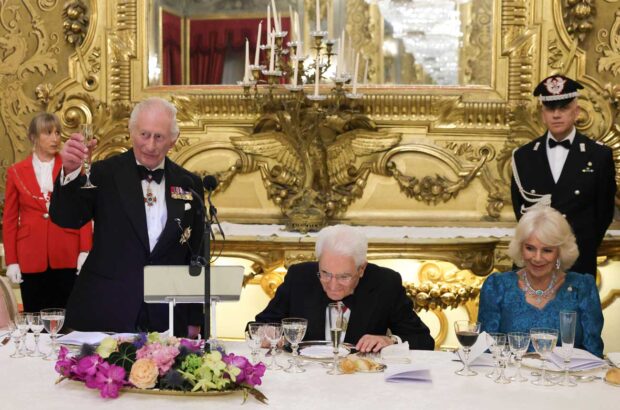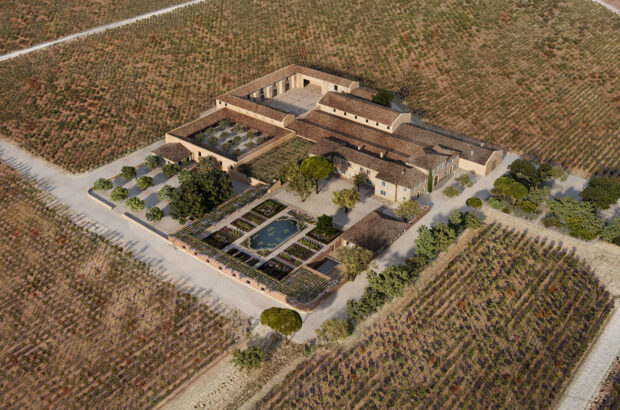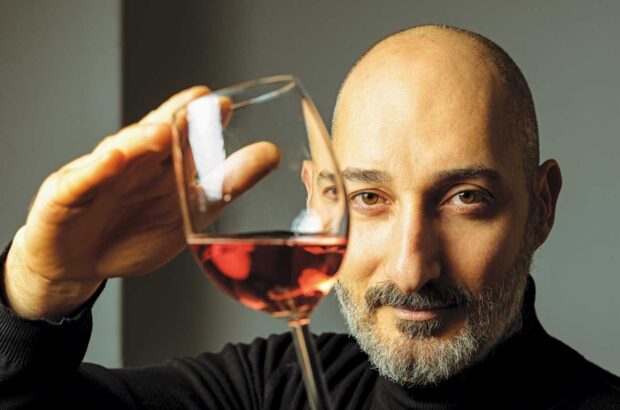As Châteauneuf-du-Pape hurtles to embrace Prestige wines, you’d think a domaine bold enough to expand to Lebanon would be first in the queue. But Vieux Télégraphe has been bottling wine since before World War I, and values tradition over fashion, says John Livingstone-Learmonth
Daniel Brunier of Domaine du Vieux Télégraphe reflects: ‘I would be happy if an Englishman were asked to name six Châteauneuf-du-Papes, and we were among them.’ It is a realistic observation, much in the vein of his late father Henri, whom Daniel describes as ‘grounded’ and ‘anti-showbusiness’.
Henri died a year ago, having given the Rhône estate the momentum to become one of those six standout domaines. Yet succession has never been straightforward. Henri had to deal with a fall-out between his father and his uncle which allowed Château Rayas to use the Vieux Télégraphe name and exploit 4ha (hectares) of its vineyards in the 1930s. The deal was only ended when 15-year-old Henri sorted it out, man to man, with his uncle on the main avenue in Avignon.
Vieux Télégraphe has since grown from a 38ha property in the mid-1970s to 70ha today, and there are also other domaines now in the care of Daniel and his brother Frédéric: Domaine la Roquète at Châteauneuf, Les Pallières at Gigondas, and a joint-venture, Massaya, in Lebanon (see p68). When such expansion occurs, the usual questions are whether quality has held up and style has changed – particularly in a region such as Châteauneuf, home to rampant, not universally welcomed modernisataion in recent times.
In July I tasted a 1981 Vieux Télégraphe and a 1981 Château de Beaucastel with Decanter’s consultant editor Steven Spurrier (see overleaf for tasting notes). We’ve both known these domaines well since the 1970s, and can recall the early, awkward months of the 1981 vintage – a drought year in the summer, with a thick-skinned crop and uneven balance at first. The Vieux Télégraphe was the more obviously Châteauneuf of the two, the Beaucastel with its own estate style. It’s worth noting that, in 1981, Vieux Télégraphe was in the hands of a man rooted in the art of cultivation, whose first instinct was to reach for the local talisman, Grenache. Beaucastel’s vineyard had been organised by the more scientific Jacques Perrin, who had observed the propensity of his north-eastern zone to produce heady wines, with Mourvèdre planted to calm the Grenache.
Changes at Vieux Télégraphe have been gradual. In the early 1980s, there was 75% Grenache, 5% Mourvèdre. Now it is 65% and 15%. ‘The Mourvèdre brings extra structure,’ says Daniel. ‘We also use it as a less oxidative agent and a colour contributor. The Syrah in the south is pretty, but not complex.’ The remark implies that Mourvèdre is the insider, Syrah the outsider.
The heart of Vieux Télégraphe is the exposed, stone-strewn plateau of La Crau; generations of Bruniers have exploited this site’s open, vigorous nature. ‘The top 20cm is “arable” – decomposed earth, a touch of clay, sand, and vegetal matter,’ Daniel explains. ‘But once you are down a metre, you hit very red clay, mixed in 70% of galet stones. Imagine how the roots have to burrow down below those many obstacles. Strangely, the clay at about three or four metres is oxidised; by that depth only some of the roots of 40-year-old vines or more can be found.’
This shows old vines are important, driving the wine style even if generations change. On La Crau, the old vines soldier on, accessing reserves of humidity in the lower, minerally clay soils. This is a trump card for Vieux Télégraphe, an estate that was bottling all its production before World War I, when the Bruniers owned 17ha on the plateau; now 60ha are there.
Sense of place
Looking at recent vintages of Vieux Télégraphe, those that stand out are the 2007, 2005 and 2001. The 2007 has more structure and freshness than many others of that vintage, while the 2005 is a classic, poised wine of great potential, which Frédéric describes as having been ‘always open’ in its first two years. Again, the word ‘freshness’ crops up, as well as my term ‘Soil to Glass Transfer’ to reflect its authentic delivery of place and vintage. The 2001 is also fresh and balanced, a wine waiting to stride out, likely to shows its wares more completely from 2010.
It is not in the Bruniers’ nature to tamper with their surroundings, except to build cellars. accused the estate of having gone soft; recalling the dark, strapping wines such as 1978 and 1981, the wines immediately after this seemed more supple and easy. Partial destemming started around 1985, and élévage was cut from two years to one in the large old 50-hectolitre barrels.
While most Châteauneuf domaines now produce many different cuvées – let’s politely call them Prestige wines – Vieux Télégraphe (and Clos des Papes) have stuck with one. Daniel, a man for whom sitting down and staying still are not actions of choice, understands the trend: ‘Domaines have become known through their special cuvées – there’s no faster, better-paid way to get yourself known. The media relay it and it is positive for the Châteauneuf appellation. I’m a bit divided, because our wine’s reputation comes from one main wine more than a special cuvée, but I see the logic. What gets me, though, is the use of new wood and extraction in some of these wines.’
Given such views, it’s a surprise to find that 2007 saw the splitting of the Bruniers’ Domaine les Pallières in Gigondas, into two cuvées: Racines, from near the cellars, and Terrasse du Diable, from higher up where there is more limestone. ‘We wanted different characters,’ he explains. ‘The velvet of Racines, as opposed to the freshness and vivacity of Terrasse – wines for different times or occasions.’ Tasted blind among over 50 Gigondas 2007s, Racines emerged well ahead of Terrasse, which I scored 14/20 (2 stars) – though most people who have tried both seem to prefer Terrasse. Pallières, meanwhile, seems to be a project still seeking its route, the wine outside the usual Gigondas robustness, with an elegance and subtlety that can be missed at times.
The Bruniers’ other Châteauneuf estate, Domaine la Roquète, is run by Daniel’s more reserved, countryman brother Frédéric, who has raised the standards of the domaine with patience. Starting with a young vineyard in 1986, Roquète now has mature vines, and its wines have gained in depth as a result, both red and white. The launch in 2004 of L’Accent de la Roquète from the plateau of Pialon, 90% Grenache and 10% Mourvèdre from the 1960s, shows just how far this domaine has advanced.
The Lebanese project, Massaya, was launched in 1998. ‘The objective was to explore a new terroir and have a fun project,’ says Daniel. ‘There is the aspect of it being near the origin of the vine – Syria and Lebanon – but we also wanted to go up the hills away from the rich plain zones, and explore those potentially higher quality areas.’ Heritage and modernisation – a constant balancing act.
Written by John Livingstone-Learmonth






